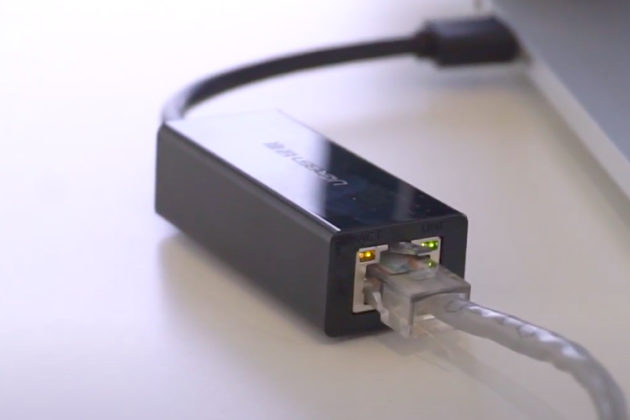

- MAC ETHERNET CONNECTION DROPS WHEN SCREEN OFF INSTALL
- MAC ETHERNET CONNECTION DROPS WHEN SCREEN OFF MAC
Method 3: Check for missing updates and install themĪlthough you have probably just updated to Big Sur, it is possible that a new update of this version of the OS is already available that can fix any possible Wi-Fi issues that may be caused by the OS. If the problem disappears with the peripherals disconnected, you can try reconnecting them one by one until you figure out which one of them is causing the problem so that you’d keep it disconnected from the computer in the future. We suggest disconnecting all such devices from your Mac, restarting the computer, and testing the Wi-Fi connection.
MAC ETHERNET CONNECTION DROPS WHEN SCREEN OFF MAC
In rare cases, certain peripheral devices may interfere with your Wi-Fi connection, causing it to become unstable or even preventing your Mac from establishing a connection.


Method 2: Disconnect peripheral devices currently connected to your Mac If you don’t have access to the router/modem, if possible, ask a person who does to restart it. To restart the router or modem, go to it, press its Power Button to turn it off, wait for about 10 seconds, and then press the button again to start the router. To restart your Mac, select the Apple Logo menu from the menu bar and then click on Restart. We know this sounds like a no-brainer, cop-out fixing method but the truth is that, in many cases, a simple restart of your machine and your Wi-Fi router/modem may be all that is required to normalize the wireless Internet connection of your Mac. Method 1: Resetting your Mac and router/modem These methods work for all types of Mac computers, including MacBook, MacBook Pro, Mac Mini, iMac, and MacBook Air models. The troubleshooting methods have been arranged in order based on their difficulty and time required to complete, so we suggest completing the methods in the order they are shown so that you don’t end up wasting time on a more complex method when an easier one could have resolved your problem. In any case, we have prepared several methods that you could try to fix any problems with your Wi-Fi that you may have started experiencing after you updated your macOS to Big Sur. In most cases, the Big Sur update itself isn’t the reason for the problem but rather the cause that triggered the underlying issue to manifest itself. A problem with your router or a temporary system bug can also be the cause of issues with your Wi-Fi connection. The potential reasons for such problems could range from anything like problems with your Mac’s NVRAM or PRAM to incorrect DNS settings. There isn’t one single universal fixing method for Wi-Fi related issues that have occurred after updating to Big Sur. Method 8: Set up a new custom network locationįixing WiFi problems after the Big Sur updateįixing Wi-Fi problems after updating to Big Sur will require you to try several different methods until the one of them resolves the problem.Method 7: Set up a new Wi-Fi configuration for macOS Big Sur.Method 5: Reset the NVRAM/PRAM of your Mac.Method 4: Connect to a different Wi-Fi network or use your own HotSpot.Method 3: Check for missing updates and install them.

Method 2: Disconnect peripheral devices currently connected to your Mac.Method 1: Resetting your Mac and router/modem.Fixing WiFi problems after the Big Sur update.


 0 kommentar(er)
0 kommentar(er)
